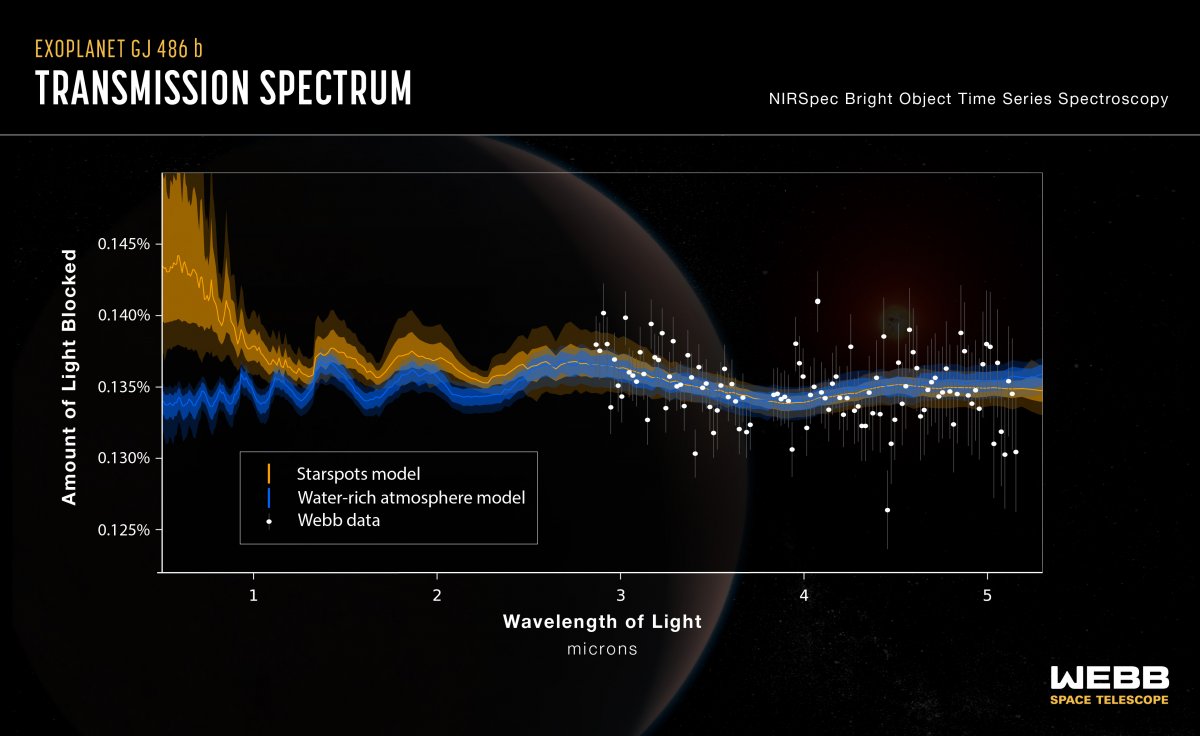A research group using the James Webb Space Telescope found the signature of water vapor while analyzing a rocky planet. However, it remains unclear whether the track comes from a celestial body called GJ 486 b or from its star. NASA explains that the probability of both scenarios is “equally plausible”. However, if water vapor does indeed exist on an exoplanet, this would be the first time such a discovery has been made on a rocky planet. So far, water has only been found on gaseous planets without a solid surface. The group wrote that given the enormous heat that pervades the celestial body, the water must be constantly replaced. Therefore, volcanoes are suitable for this purpose.
More analysis is needed
Like the group around Sarah Moran of the University of Arizona They explained, they used the NIRSpec instrument to target a so-called transit of GJ 486 b in front of its star. If the outer planet had an atmosphere, bits of starlight would pass through on the way to us. Their traces can be found in spectroscopy. In this case, the spectrum was mostly flat, but at shorter infrared wavelengths it had an “interesting increase at shorter infrared wavelengths”. Computer models have suggested that water vapor is the most likely cause. So the measurements match both water vapor on an exoplanet and an origin in the star itself.
Although most stars are too hot for water vapor, it can occur in stellar spots. By comparison, it’s pretty cool up there. Even in the sunspots of our home star there is water vapor. Since the star GJ 486 is generally much cooler than our sun, there may be a lot of it in its patches. Although there is no evidence that such spots appeared on the side facing us during an exoplanet transit, this cannot be ruled out. The team is confident that further observations with the MIRI and NIRISS instruments can help clarify the exact source of the water vapor.
The team explains that if it did indeed occur on an exoplanet, it would likely be constantly renewed. And due to the enormous heat of the celestial body and the strong radiation of the star, it would have been lost. GJ 486 b is said to be about 30 percent larger than Earth. It takes 1.5 Earth days to orbit its red dwarf star, so it’s very close to it. That is why it is not in the habitable zone, so water can exist there only in the form of vapor. So it is assumed that it is gravitationally bound and always rotates the same side to its star. According to the team, the temperature at the surface is about 430 degrees Celsius. analysis It has been published in Astrophysical Journal Letters.
(mo)

“Tv expert. Hardcore creator. Extreme music fan. Lifelong twitter geek. Certified travel enthusiast. Baconaholic. Pop culture nerd. Reader. Freelance student.”







More Stories
The asteroid “Apophis” comes incredibly close to Earth – “a great natural experiment”
James Webb Telescope: Controversy over life on planet K2-18b
Limbecker Platz in Essen: The building has been evacuated! Police on site